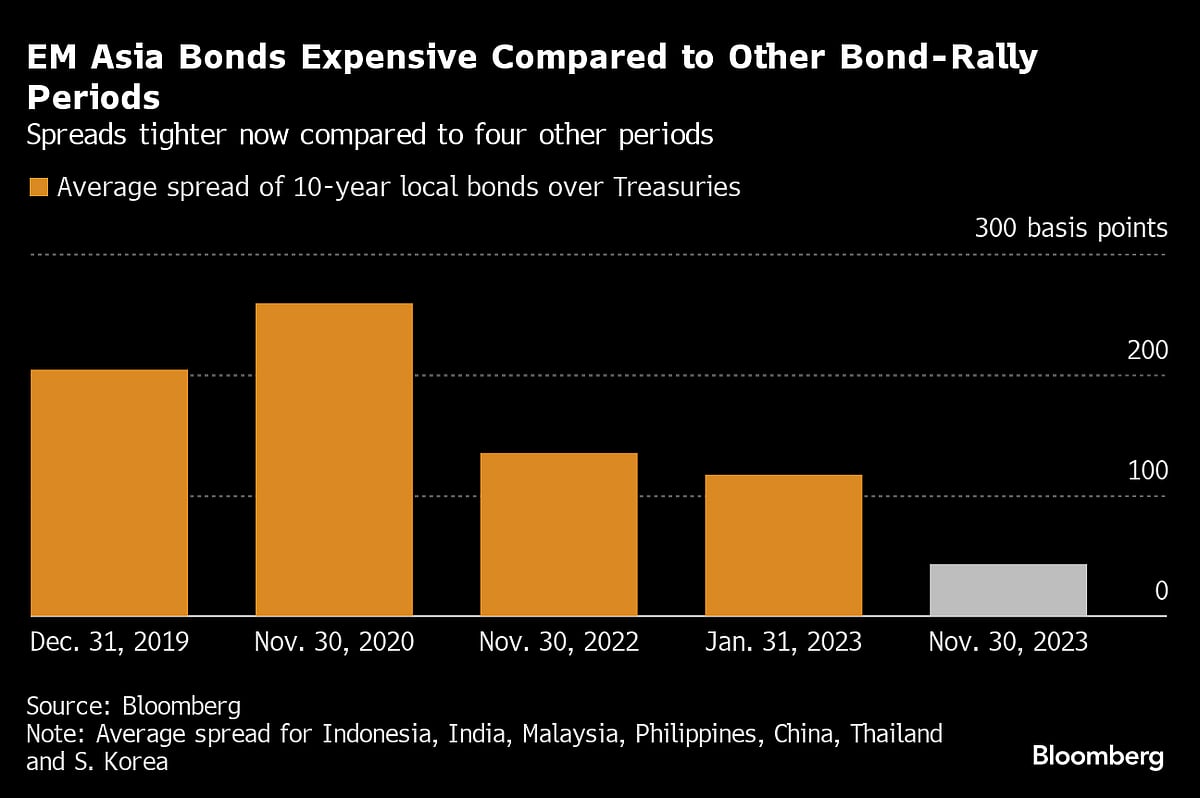EM Asia Bonds’ High Valuations May Start To Worry Investors
Emerging Asia bond yields fell last month as slowing inflation gave central bankers reason to rethink rate hikes and wagers grew that the Federal Reserve may start to ease next year.

(Bloomberg) -- The rally in emerging Asian bonds last month is spurring valuation concerns, and that along with expected lower carry returns may weigh on prospects for future gains.
That’s according to a Bloomberg analysis of FX carry and long-dated bond valuations in emerging Asia after four previous rallies since 2019. Carry in emerging Asia lags global peers, with the average three-month return is at minus 1.20%, in comparison to 2.30% in Europe, Middle East and Africa, and 4.32% in Latin America.
Emerging Asia bond yields fell last month as slowing inflation gave central bankers reason to rethink rate hikes and wagers grew that the Federal Reserve may start to ease next year. Valuations are expensive as the region’s 10-year yields offer a tighter premium over similar-dated Treasuries, making them less alluring to global investors despite the Treasury rally in November.

The Bloomberg Asia dollar index and Bloomberg gauge of EM Asia bonds had their best monthly returns in 12 months in November on hopes for a pivot from the Federal Reserve.
“I expect Asian currencies to by and large underperform global EM FX in 2024, partly because of the generally lower carry on offer by Asian currencies and partly because a US slowdown will have a negative impact on export-dependent Asian economies,” said Alvin Tan, head of Asia FX strategy at RBC Capital Markets in Singapore.
Emerging Asia’s bond spread over Treasuries is significantly tighter now compared to previous episodes following a rally in EM Asia bonds. The average spread of seven emerging-Asia bonds is currently around 47 basis points, below the 120 basis points at the end of Jan. 2023, and 240 basis points at the end of Nov. 2020.
At the shorter end, the carry in emerging Asia currencies is similarly lacking. The three-month forward implied yields for Malaysia, China, Thailand, and South Korea are all offering below a US cost-of-funding benchmark, the 3-month Secured Overnight Financing Rate.
Carry returns have resulted in differentiated spot performance in November — which may be a harbinger of performance in 2024. Latin American peers outperformed last month, with the dollar-LatAm index falling by 2.7%, more than the 2.4% decline in the dollar-Central and Eastern European gauge, and the 2.30% drop in the dollar-Asia index.
More stories like this are available on bloomberg.com
©2023 Bloomberg L.P.